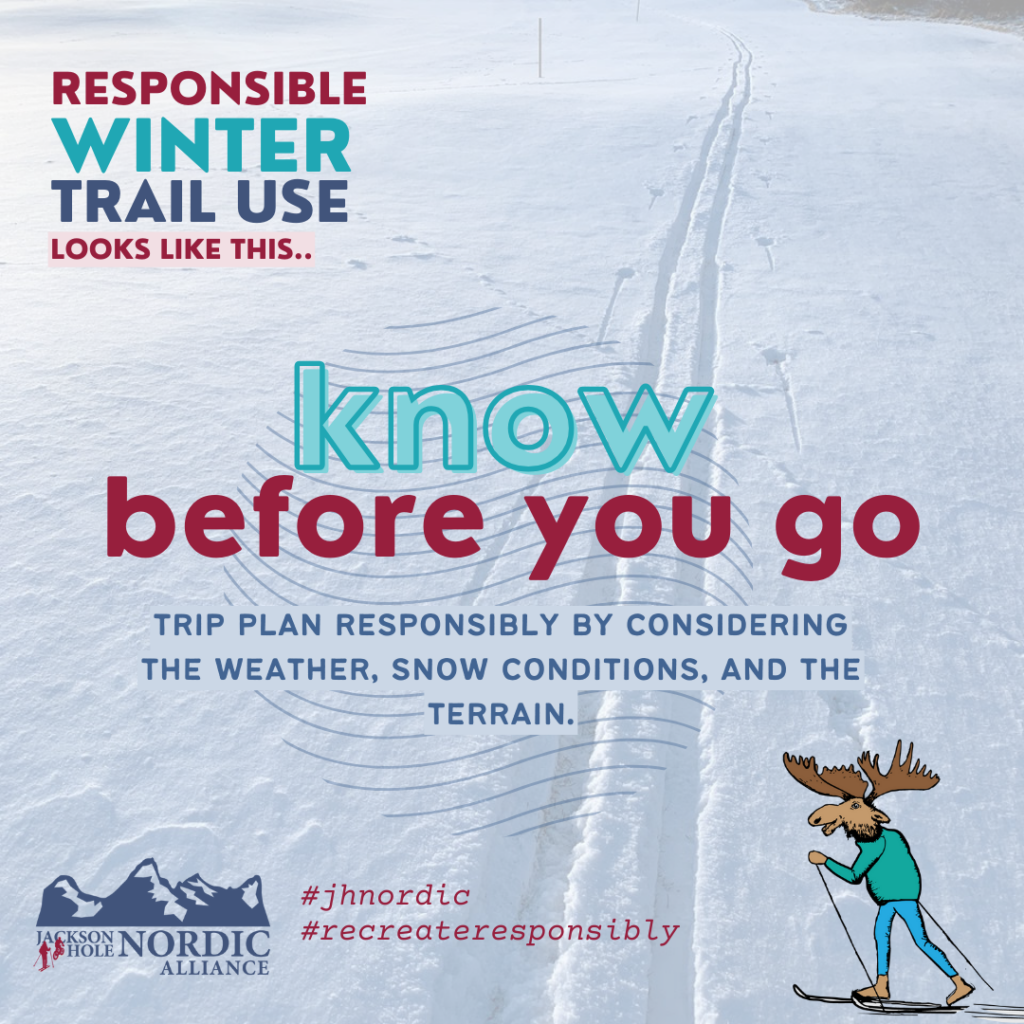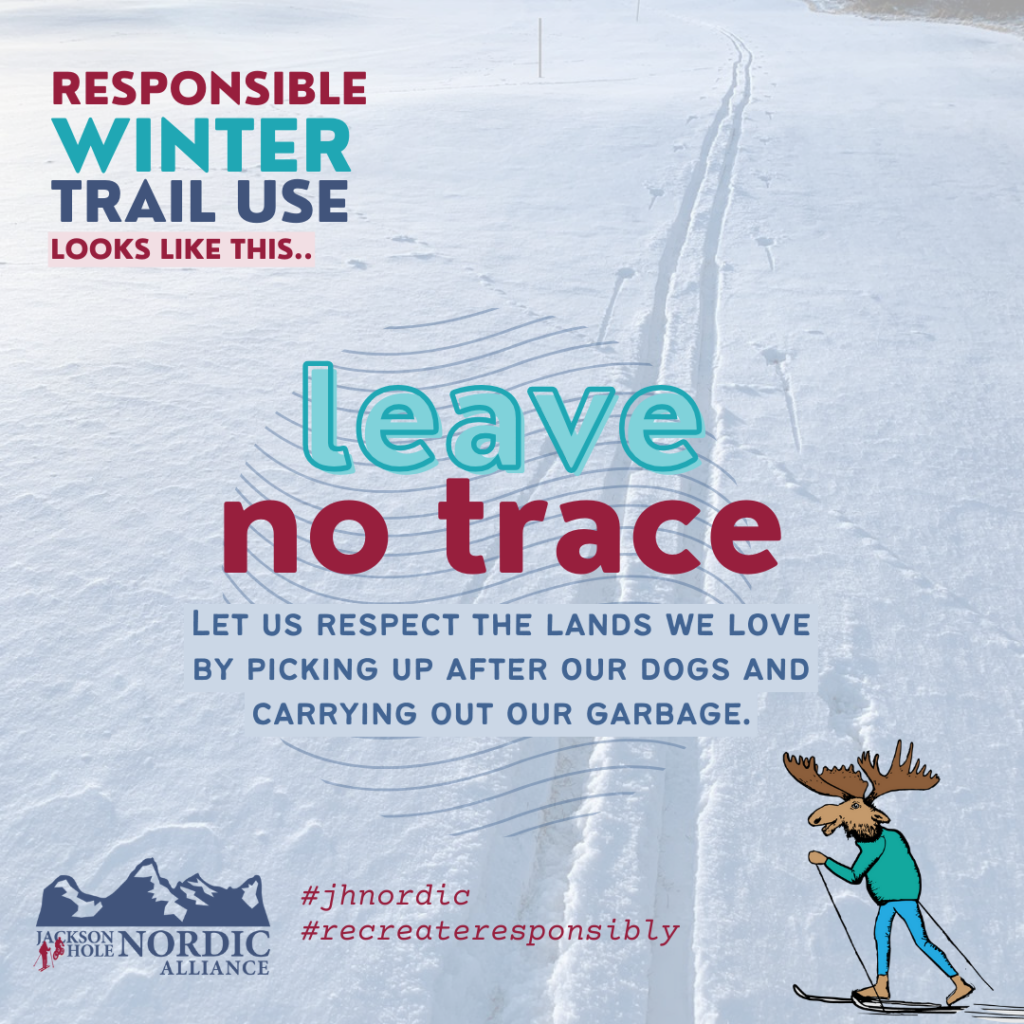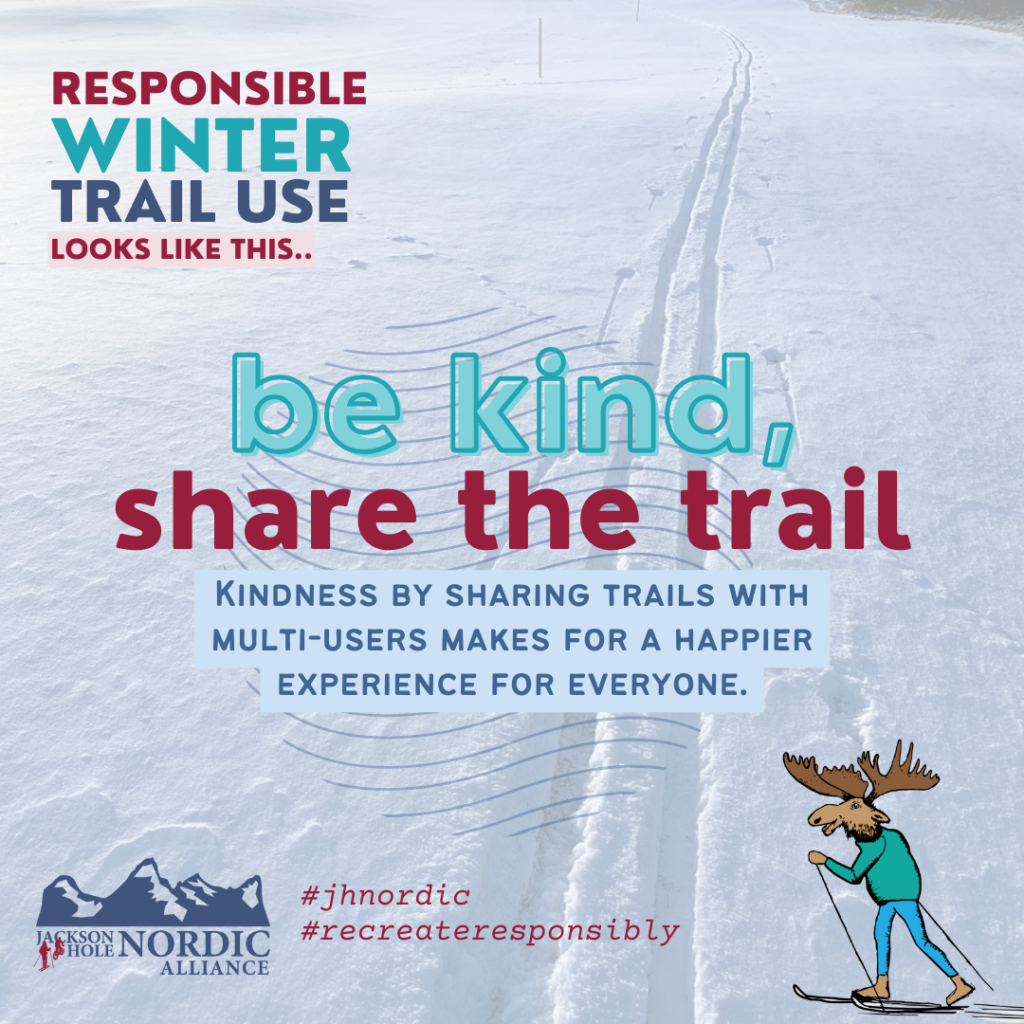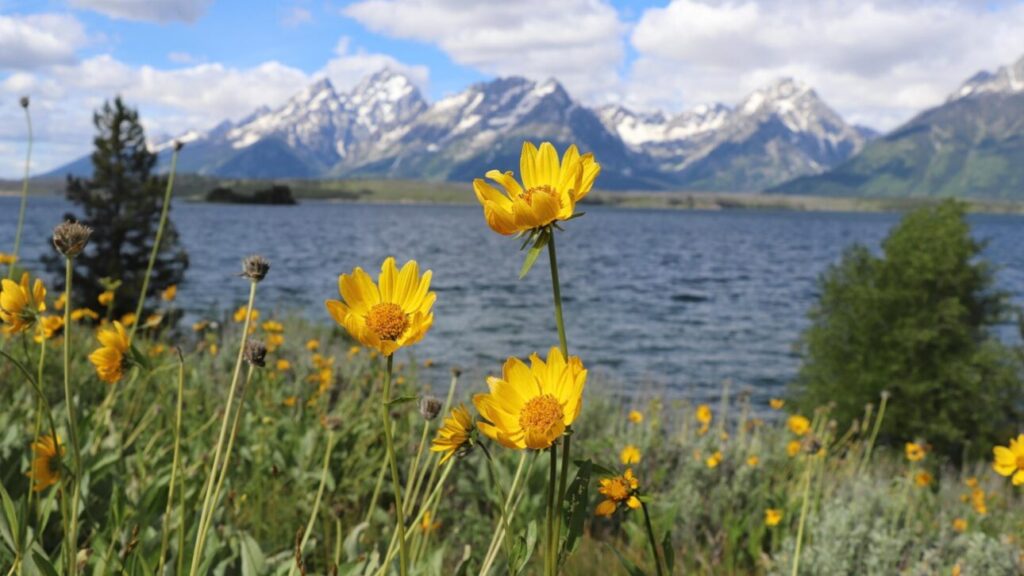Recreating responsibly is one of the best ways we can preserve the qualities that draw us to live and recreate in this magnificent place. There are good habits we can practice every time we go out that help protect our watershed once the snow melts, reduce the stress that wildlife may experience during a season when they are vulnerable, preserve the quality of a groomed track, and promote community between users enjoying different types of recreation. Here are some friendly reminders for the next time you hit our winter trails.
Trail tips for skiers, bikers, walkers, snowshoers & dog-walkers.

Responsible Winter Trail Use: Plan ahead and prepare
Find out which trails are open to and good for your choice of travel (eg is it singletrack for fat biking? Are there classic tracks?). Know which trails have wildlife closure areas and which welcome dogs. Plan and pack layers that will keep you comfortable. On JHNordic and other local sites you can also
- Explore over 100+ winter trails in the region to find ones that suit every level of adventure for different human-powered trail activities.
- Sign up for the Daily Trail Report to receive local updates, inspiration and community info.
- Check real-time grooming updates and trail observations.
- Check local weather and the daily avalanche forecast.
Responsible Winter Trail Use: Scoop the poop & other Leave No Trace Practices
- Pet waste contributes a significant amount of nutrients and pathogens to surface water, which then can cause problems such as algae bloom and pathogen spread that harm people, pets, and wildlife (Mountain Neighbor Handbook).
- In Recreating with Dogs, the PAWS Poop Fairies remind us that in addition to managing waste from our own dogs, we can expand our stewardship by picking up an additional bag as we return to the trash can.
- We can also practice Leave No Trace by paying attention to snack wrappers, tissues, and other small pieces of trash, making sure they stay in our pockets, not on the trail.
- Many winter trails are intended for mixed use. Even though our tracks will melt out with the snow, we can still apply the LNT principle of traveling on durable surfaces by choosing a path that preserves track quality and maximizes fun for all the different uses.


Responsible Winter Trail Use: Give Wildlife Space
By mid-winter in the 2023-2024 season, the Bridger-Teton National Forest winter trail ambassadors had counted 260 mule deer, 59 elk, 18 moose, 1900 people, & 1000 dogs on four main trails. We can help animals to stay strong during the winter months when they are more vulnerable.
- Pay attention to and comply with wildlife area closures. Visit tetonconservation.org for wildlife closure maps.
- Observe wildlife from a distance.
- Avoid active feeding or leaving food that can later be consumed by wildlife.
- Choose a different route or maybe even a different place to recreate if updates indicate particularly high stress for animals.
- Keep dogs close by and on a leash.
Be a Community Builder on the Trail
We have incredible winter trails in the greater Teton region. Grab a friend and share one of your favorites with them!
As trail use increases across the entire United States, we can all play a part in building a strong winter trail community by being kind when we encounter other users. In turn, this can help develop strong advocates for the trails so that we can work together to preserve the great trail qualities and access that we have in our region. Whether it is greeting other users with a head nod and a smile, stepping off the path to make way for another, or sharing a tip about trail etiquette when you overhear someone wondering which section of track they should use, small kindnesses can add up to big impacts.
See you on the trail!



